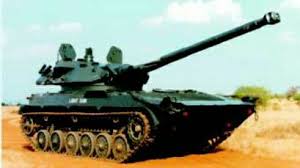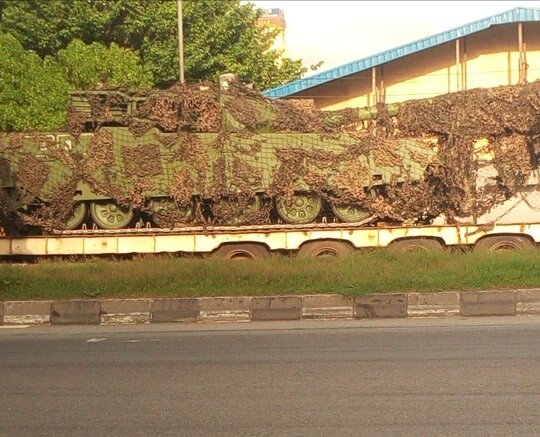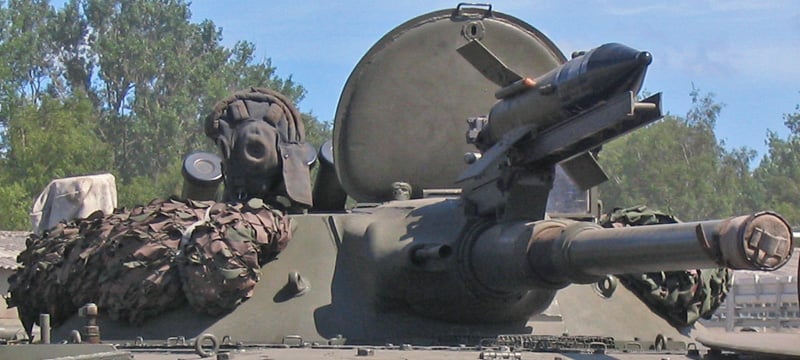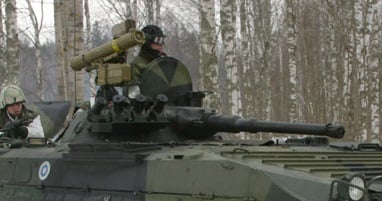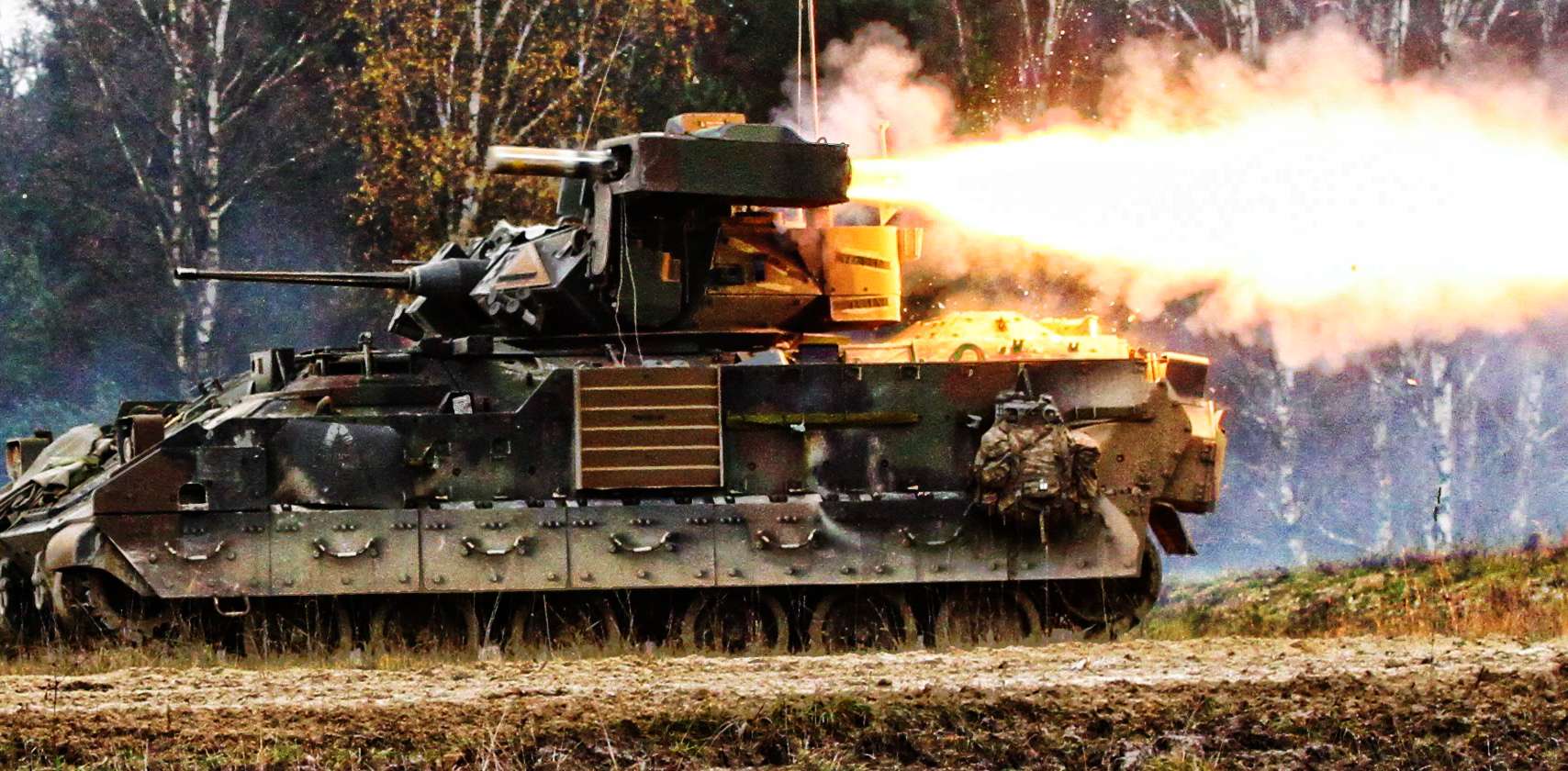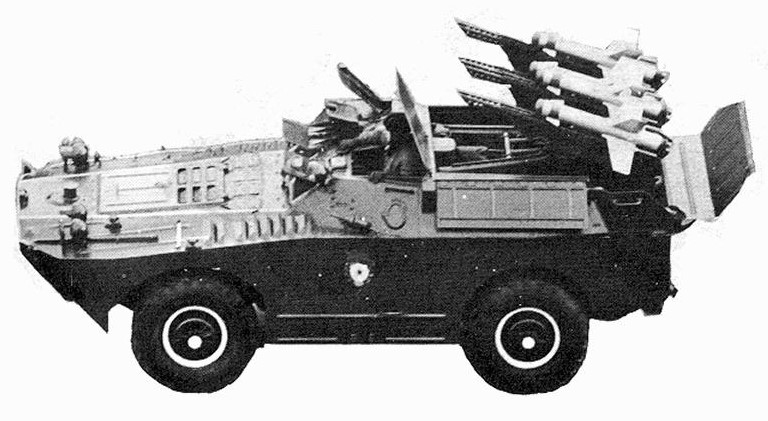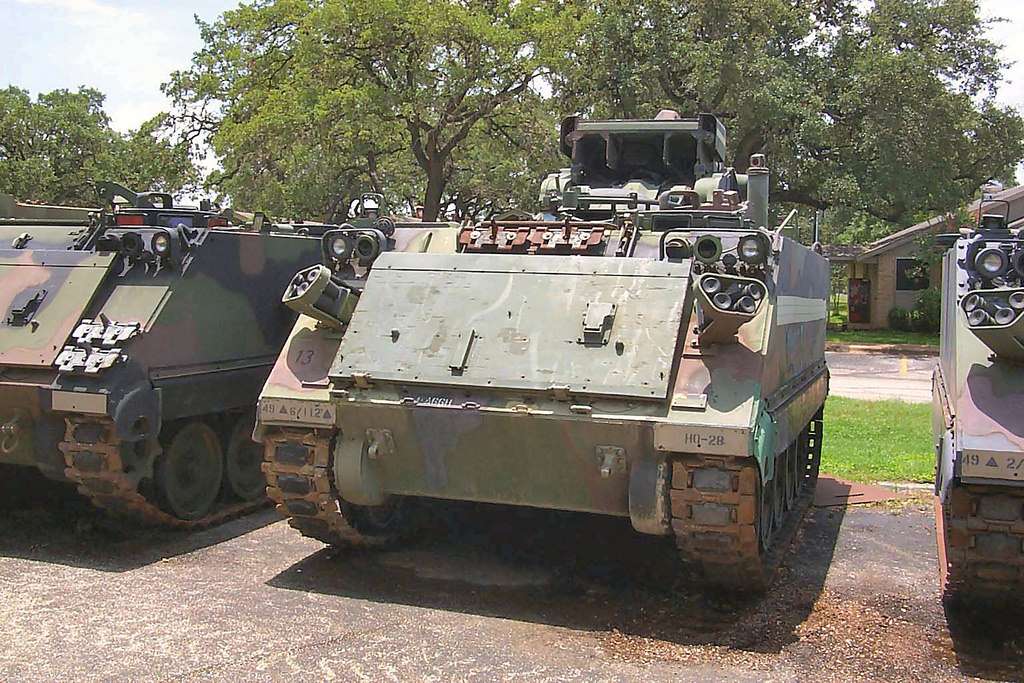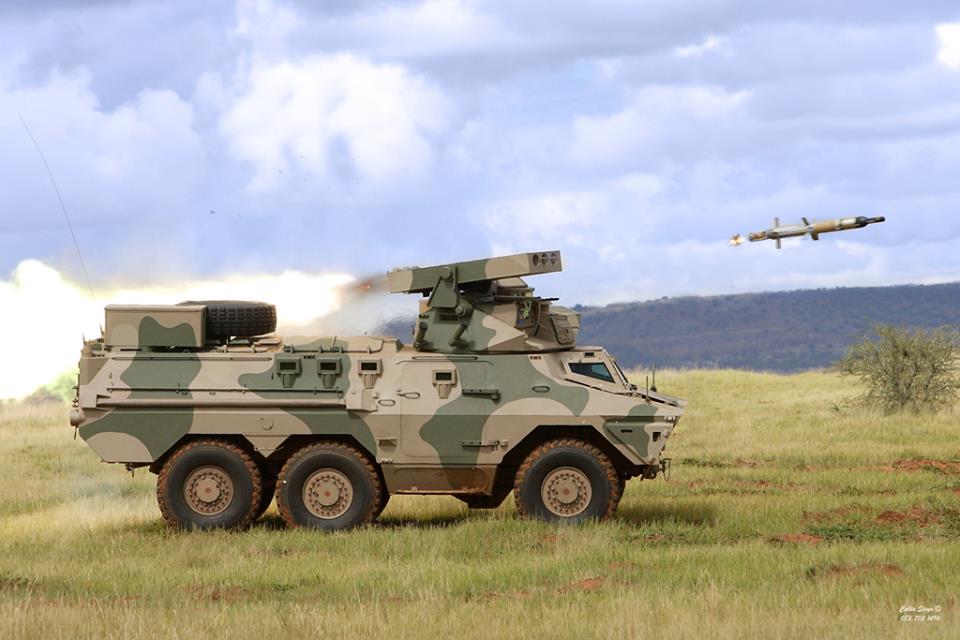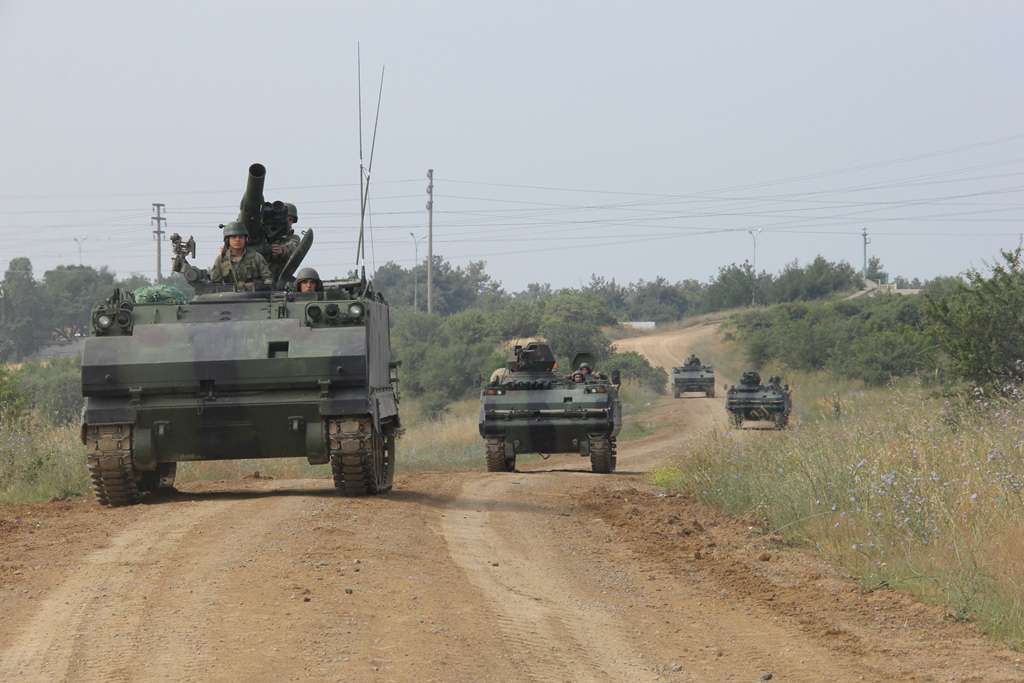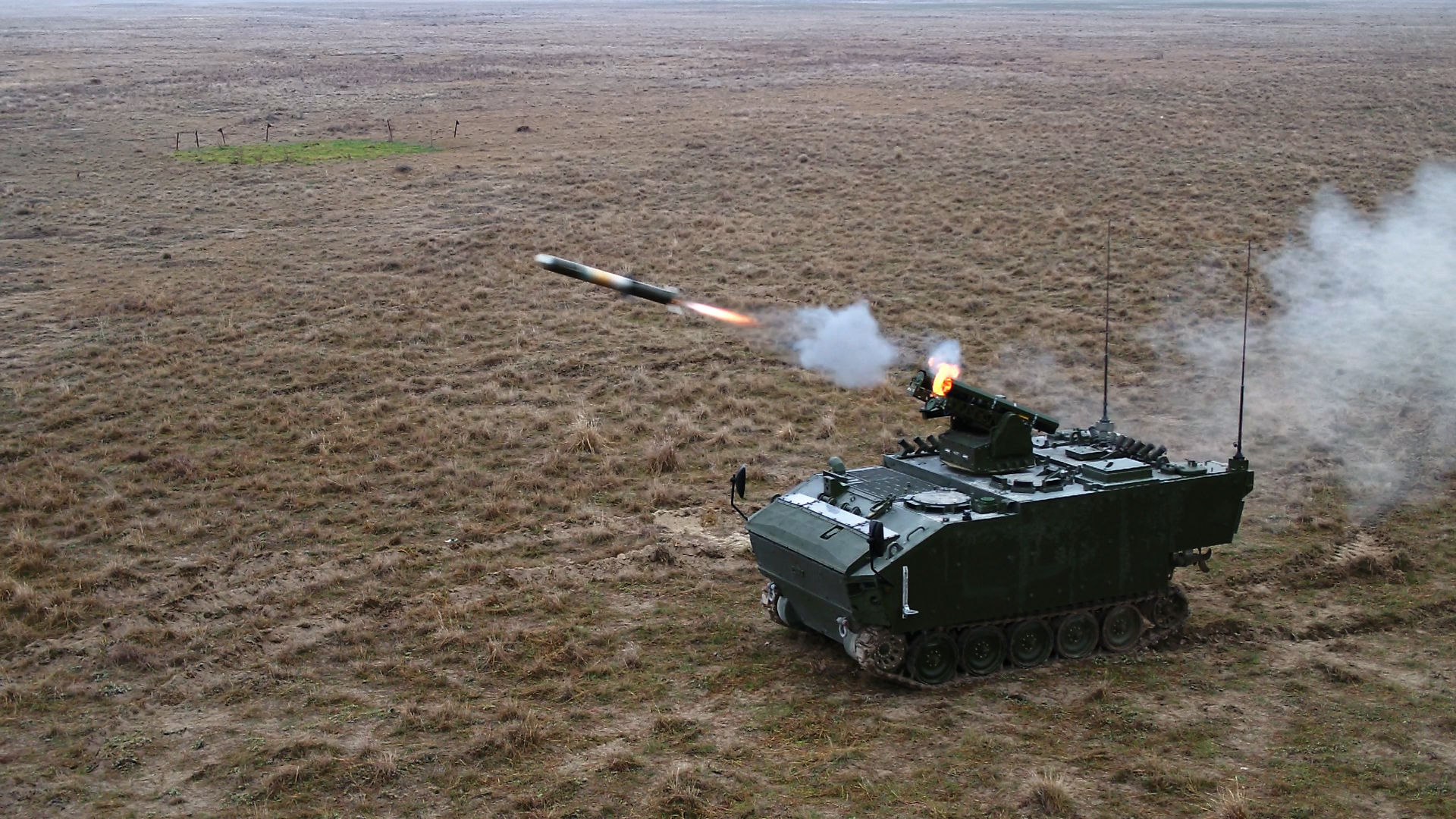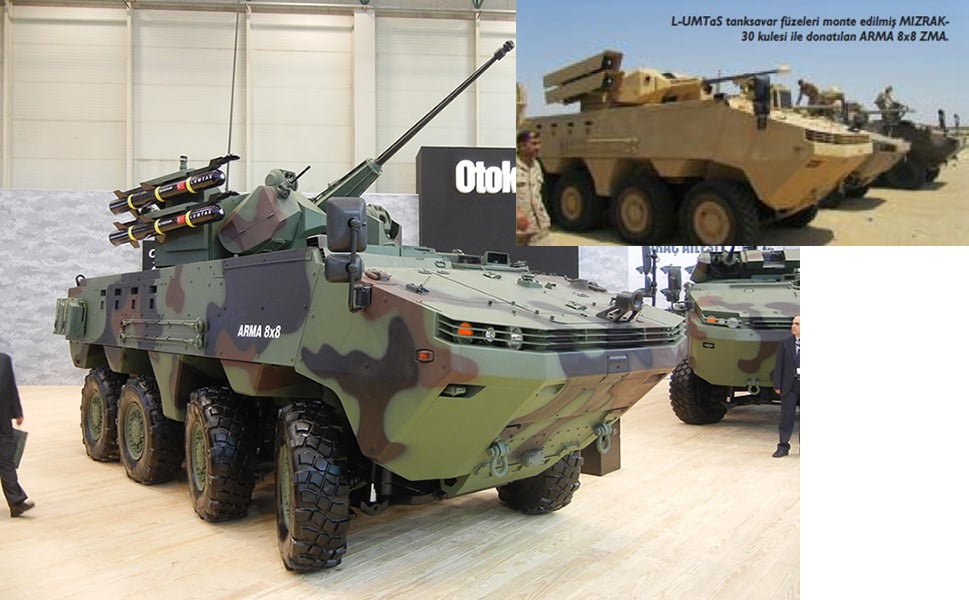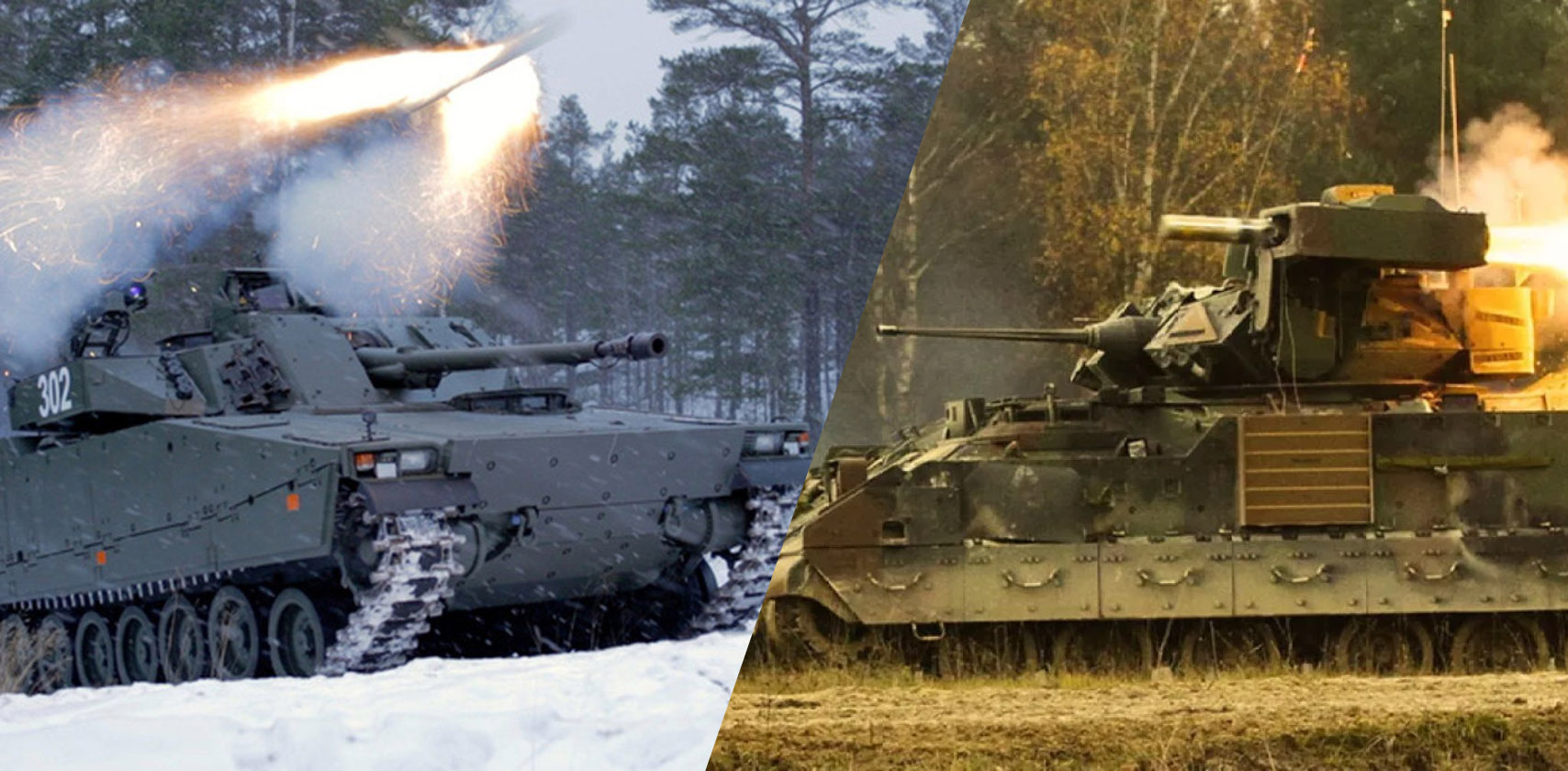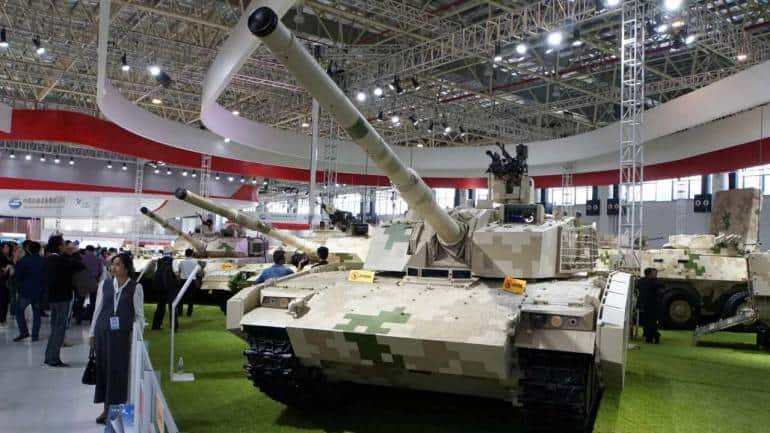Infantry Fighting Vehicle and ATGMs
An Infantry Fighting Vehicle (IFV) is a vehicle providing armoured personnel carriers and infantry with fire support. IFVs can be wheeled or tracked and armies can take both wheeled and tracked IFVs into inventory. In armoured fighting vehicles, cannons have more varieties of caliber, compared to tanks and these calibers also differ by the doctrines of countries. Cannons are not the only solution to eliminate menaces, with antitank guided missile (ATGM) disturbing the equation.
First Examples
Entering service in 1966, BMP-1 IFV is one of the first ones in this regard. In earlier versions, there are 73mm semiautomatic cannon and coaxical 9314 Malyutka (AT-3 Sagger). This ATGM, which is wire guided (MCLOS), must be guided to hostile armour by a sniper till the moment it reaches the target. First generation wire guided ATGM with a maximum range of 3 km, 9M14 Malyutkas were not preferred later in BMP-1s, due to poor performance.
BMP-1 and Malyutka ATGM
Drawing great attention during the Six Days War, the Vietnam War and the Yom Kippur War, ATGMs proved advantegous over infantry and tanks. It turns out that when this remarkable ‘advantage’ gain mobility, it became far more effective and IFVs’ support to infantry was to a great extent bolstered. Later, the integration process of ATGMs into IFVs was accelerated, resulting in the advent of “tank destroyers” carrying only ATGM, namely antitanks or tank hunters.
BMP-1P
In the BMP-1P produced by USSR in 1979-1983, SACLOS Konkurs and Fagot ATGMs, which were relatively more accurate and successful than Malyutka ATGMs acting on first generation MCLOS guidance principle, were used. In SACLOS ATGMs, the gunner does not have to guide the missile. Yet, the operator must light the missile through positioning the sight above the target.
In BMP-1P, ATGM is not coaxially mounted to cannon, it is positioned to the right of turret. In BMP-1 and BMP-19, contrary to modern IFVs, ATGMs cannot be controlled inside the vehicle. The vehicle commander must open the cover of the turret and command ATGM.
Reflections on Western Bloc
The integration of ATGM into BMP- IFV had also its reflections over Western bloc. After the first series Marder IFVs produced between 1971-1975, in the models manufactured between 1977-1979, in addition to 20mm cannons, French Milan ATGM was integrated into IFVs in a way that the IFV commander could uncover and command it. Milan ATGM operates with SACLOS guidance principle just as Konkus and Fagot systems do. Another Western vehicle produced on the basis of the same principle is British FV510 Warrior vehicle. Yet, it differs with its 30mm cannon.
Marder 1A3 and FV510 Warrior with MILAN ATGM
On the Way To Modern Use
M2 Bradley IFV entered service in 1981. Having 25mm automatic cannon, the vehicle has, as ATGM, double BGM-71 TOW antitank missile launchers with a range of 3750 m. TOW missiles used by Bradley operate with SACLOS guidance. In M2 Bradley, a newer model when compared to the vehicles abovementioned, the commander does not have to leave the vehicle in order to fire ATGMs. Yet, to be able to fire, the vehicle must stop. In the models following M2A1 level, TOW II ATGM was preferred.
M2 Bradley firing TOW missile
“Tank Destroyers”
These vehicles have derived from Armoured Personel Carrier (APC) and Tactical Wheeled Armoured Vehicle (TWAV). Indeed, IFVs also derive from APCs. These vehicles, which are smaller in size and produced less than tanks, have more varieties than tanks, which is an impediment to examination and analysis of IFV and APC-type vehicles.
First Examples
Manufactured by USSR, BRDM-1 TWAV first appeared in 1957. Its model integrated with 3M6 Shmel (AT-1 Snapper) ATGM came into existence in 1964. It also operates on the basis of MCLOS guidance principle, as it is in 9M14 Malyutka.
BRDM-1 TWAV 3M6 Shmel (AT-1 Snapper)
Raketenjagdpanzer, produced and developed by West Germany, entered service in 1961. It carries French SS.11 ATGM, also operating with MCLOS guidance principle.
Produced by USA, M901 ITV was developed through adding M220 TOW launcher on the chassis of M113 APC. Entering service in 1979, the vehicle has a capacity of carrying 2 TOW missiles ready to fire.
M901 ITV
Operative Example
Ratel ZT-3 is an antitank with three launchers and ZT3 Ingwe missile with a maximum range of 5 km, placed on Ratel 6×6 TWAV. Still in the pre-production phase in 1987, Ratel ZT-3 is said to, upon joining “Modular Operation”, have neutralized 3 USSR tanks in a range of 2 km, only within 10 minutes.
Ratel ZT-3
ATGM-integrated Armoured Vehicles in Turkish Armed Forces
In Land Forces Command of Turkish Armed Forces (TAF), there is no sign of having an approach towards hybrid solutions.
As a result, there are no ATGM-integrated IFVs in TAF’s inventory. Yet, there are three different tank hunter in the inventory. In near future, it will rise to 4. M113 Armored TOW Vehicle (ATV) and ACV-15 ATV TOW II have in the inventory for so many years.
M113 ATV is the version M113A2, which is the modernized version of M113, integrated with standard TOW launcher used by personnel through positioning out of the vehicle. In addition, TAF has 156 of them. M113 ATV was last seen in the Operation Euphrates Shield against the positions of YPG terrorist organization. It also appeared in the training activities conducted in Hatay, in 2019.
M113 ATV
In the inventory, TAF uses 48
ACV-15 ATV and TOW 2 turret developed by Kværner, a company headquartered in Norway. In the vehicle with two TOW 2 missiles ready to fire at the turret, 10 spare missiles are stored.
ACV-15 ATV
Within the scope of Weapons Carrier Vehicles – Silah Taşıyıcı Araçlar[TR] (WCV) Project launched to serve the purpose of meeting the need of TAF for modern tank hunters, FNSS and Presidency of Defense Industry signed a contract in 2016. In accordance with the contract, 184
Kaplan-10 and 76
Pars 4×4 WCVs will be delivered. WCVs will use Russian Kornet-E and Turkish
OMTAS ATGM.
As per the contract, 10
Kaplan-10 WCVs, 2 of them still in pilot production phase and 6 in mass production were delivered to TAF.
Kaplan-10 WCV
Conclusion
Preserving their lethality since the beginning, ATGMs are attempted to be acclimatised to more power by means of more mobility. Further research for the development process within ATGMs is needed.
Considering the integration of ATGMs into IFV, APC and TWAV, it is plain as day that they have such a crucial role in the way many armies comprehend “new armament understanding”.
In TAF’s fashion, there is a leaning towards tank-infanty cooperation and antitank troops, along with antitank support ot IFVs.
Yet, under symmetric and asymmetric battlefield conditions, ATGMs multidimensionally serve with a maximum range of 5,5 km. Particulary, during the Syrian Civil War, there were abundant examples of tanks, armoured vehicles, soft-skinned pickups, bomb-laden vehicles, morever bombings of helicopters during take off or landing, or planes in the hangar. So far, a vast number of ATGMS have been delivered to various armed groups by many states. In the region, there have been some attacks conducted using ATGMs, just as there are also other mortar and RPF fires conducted against the groups of 3 or 5 people.
During the Operation Euphrates Shield, many feedback from the field uncovered the incapability of 25mm cannon of
ACV-15 in terms of range and impact. There were also other informations , which have yet to be confirmed, 25mm cannon remains incompetent against fast- speed suicide vehicle-borne improvised explosives (SVBIED).
Upon noticing that ATGMS can be used against multiple various threats and along with the proliferation of fire&forget ATGMs and developments such target update and instantaneous tracking of IIR seeker, armies have commenced to adapt armoured troops accordingly.
Russia will use Bumerang-BM turret with 30mm cannon and 4 Kornet-E in T-15 tracked IFV, 8×8 Bumerang wheeled IFV, both of which will be accompanying new generation main combat tank T-14 Armata, and Kurganets-25 amphibious tracked IFV.
Bumerang-EM on the left, Nexter Systems product on the right
French defense firm Nexter System, in 8X8 VBCI 2 wheeled IFV, prefers anew generation turret with 40mm cannon and 2x(model unknown)) ATGM.
Particulary, in Europe, countries procuring new IFVs use ATGMs at the turrets of these vehicles.
In Turkey, Otokar exhibited 30mm Mızrak turret with OMTAS missiles in order to prove its capability. Besides, in test and shows for a foreing customers, 30mm Mızrak turret was imaged with L-UMTAS ATGM.
OTOKAR ARMA
The greatest reason why Turkish companies have some reservations in this issue is that TAF does not open up to hybrid use. Likewise the fact that Korhan turret, which was exhibited in IDEF’17 by ASELSAN and is highly developed, equipped with its acoustic detection system, mini UAV (drone), laser warning system, 360 degree panoramic imaging system, active protection system, 35mm programmable ammunition firing capacity and modular armour protection, does not have any ATGM launcher is mainly a consequence of TAF’s approach.
ATGMs are multipurpose, besides being “antitank”, which place them at the top of rankings. Now, it is possible to rename guided antitank missiles, which are expanding in use, as “guided infantry support missile “. Many ATGMs Already used in Syria are first- and second-generation missiles. It is also very evident that with third generation fire&forget IIR seeekers and ATGMs with target tracking and updating, the field will be more competitive. ATGMs evolution will not only encompass guidance systems. The more extensively they are used, the more various ATGMs with different seekers for different destruction types will come in sight. In fact, Russian Kornet ATGMs offer a variety of aerosol seekers.
Taking all these issues above and shifts in modern warfare into account, the development and integration of guided infantry support missiles in the form of “ATGM”, which are highly effective in close and long distances into platforms is an urgent need.
An Infantry Fighting Vehicle (IFV) is a vehicle providing armoured personnel carriers and infantry with fire support. IFVs can be

en.defenceturk.net

